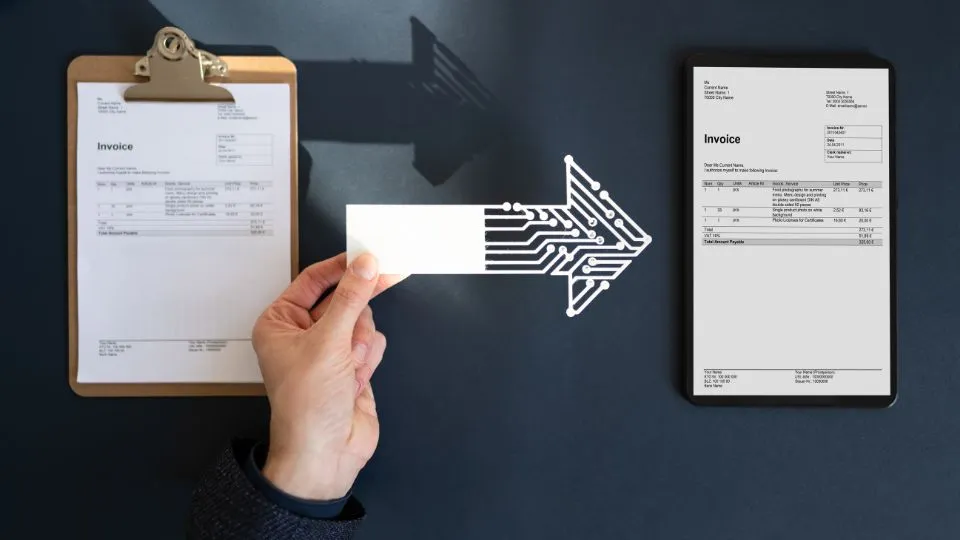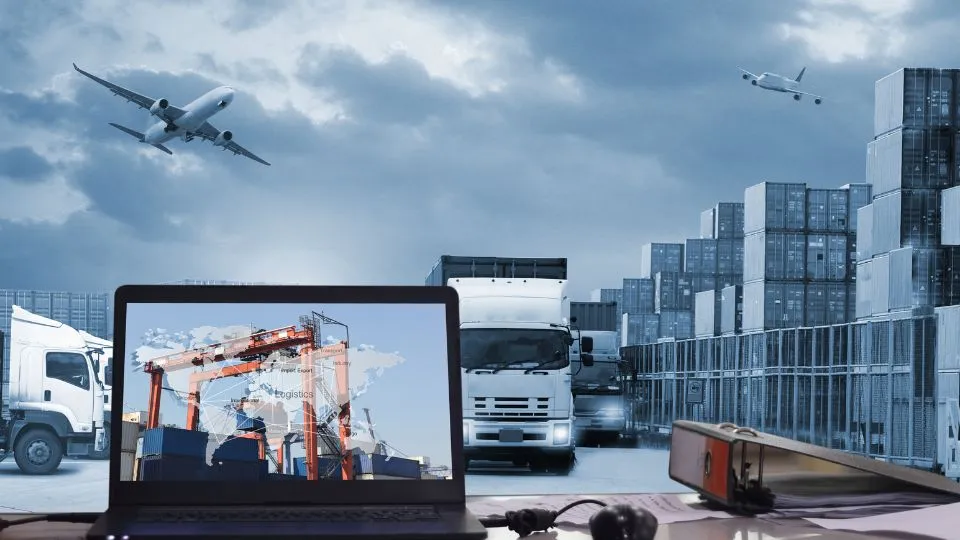The UAE’s logistics market is projected to grow at a CAGR of 7.44% between 2023 and 2028.
For a number of reasons, the UAE stands tall as a regional leader in logistics.
It is home to global hubs like Jebel Ali Port and Dubai’s free zones. These hubs fuel the country’s logistics sector, making it one of the most dynamic markets in the world.
However, freight forwarding faces significant challenges in the vibrant market of the UAE.
If you are operating in this region you know it. Complex customs regulations, rising operational costs, and fierce competition to name a few.
Without a clear strategy, it is like setting sail in turbulent waters without a compass. But what if you could turn these obstacles into stepping stones for success?
In this guide, we’ll explore practical solutions to tackle the top 8 freight forwarding challenges in the UAE.
Let’s dive in!
1. UAE Customs and Trade Regulations

The UAE’s customs regulations are no walk in the park. These rules change frequently and align with international standards and trade agreements, making it challenging to keep up.
Imagine your shipment of high-value electronics has just arrived at the port. Now, it’s your responsibility to clear it through customs. Every detail on the Bill of Lading, Commercial Invoice, and Certificate of Origin must be spot on.
One small mistake could lead to delays, fines, or even the shipment being held indefinitely.
So, how do you avoid costly mistakes and keep your shipments on track?
The Solution
Regularly check government websites and follow the UAE Federal Customs Authority for the latest updates.
Bring in experts who know the ins and outs of customs compliance. These experts are well-versed in customs documentation and can guide you in filling the documents more accurately.
You can also use digital tools or platforms like SeaRates ERP to simplify the customs process.
These platforms provide user-friendly interfaces for submitting required paperwork, tracking shipments in real-time, and processing duties to save time and reduce errors.
2. High Port Activity and Congestion in the UAE

Have you witnessed the constant flurry of ships docking and cranes lifting containers? It always happens in ports like Jebel Ali and Port Khalifa. These ports are among the busiest in the world, handling millions of tons of cargo annually.
While this is a sign of a growing trade environment, it also brings a familiar challenge: congestion.
With so many operations happening simultaneously, bottlenecks at these ports can lead to missed deadlines, increased costs, and frustrated clients.
To overcome port congestion, you need a better action plan.
The Solution
To manage congestion at these bustling ports, plan for off-peak times. You can schedule your cargo during the early morning hours, late evenings, or on weekends when the ports are usually less crowded.
Use real-time freight tracking systems to monitor traffic and avoid delays. These tools help you anticipate congestion and make informed decisions to reroute or reschedule shipments.
Strong relationships with port officials can also work to your advantage. It can allow you to secure priority handling of your shipments.
3. Supply Chain Disruptions

Imagine you’re waiting for a shipment from Asia. Suddenly, a storm hits or a global event causes major delays and halts everything. It’s frustrating, but supply chain disruptions are unpredictable and can happen at any time.
So, how do you stay prepared for these unexpected events?
The Solution
The key to overcoming disruptions is creating a resilient supply chain.
You can overcome this issue by working with multiple suppliers. That way, if one supplier faces a delay, you can switch to another. This helps keep your supply chain moving, even when things go wrong.
Always keep your backup routes ready. Having options like an alternative port, or a backup transportation method in place can make all the difference. This allows you to stay one step ahead when things go off track.
Use technology-driven tools or supply chain software that can help to forecast potential disruptions. These tools can track weather patterns, monitor geopolitical situations, and analyze shipping data to help you predict delays.
To put it simply, flexibility is your superpower in these situations. The more adaptable you are, the better you can manage these unexpected challenges.
4. Rising Competition

The freight forwarding industry is fierce. New companies emerge, each promising faster, cheaper, and more reliable services. With so many competitors in the market, even staying relevant can be tough.
The Solution
You need to offer more than just the basics. You can offer real-time shipment tracking or provide personalized logistics plans tailored to your client’s specific needs.
Another way to stand out is by specializing in niche markets. For example, you could focus on e-commerce logistics or handling temperature-sensitive goods.
Focusing on these areas makes your business more appealing to clients with specialized needs.
Make sure your customers understand what sets you apart and why they should choose you over your competitors.
5. Regional Geopolitical Instability

The Middle East is a dynamic region, and geopolitical tensions can sometimes flare up. Conflicts, diplomatic disputes, or sudden policy changes often strike without any warning.
Your shipment has to pass through multiple ports during these instabilities. This can compromise your shipment and its scheduled delivery, resulting in delays, reroutes, or increased costs.
To deal with this, here are the steps you can take.
The Solution
Keep a close eye on regional and political news. Always have a contingency plan ready. Never rely on a single route or region for your shipments.
Work with reliable local logistics partners who are familiar with the region’s complexities.
Additionally, invest in risk management strategies and cargo insurance to ensure financial protection against potential damage or losses.
6. UAE’s Sustainability Vision 2030

The UAE has launched Sustainability Vision 2030 to make the country a leader in sustainable development. The vision focuses on maintaining a balance between economic growth and environmental responsibility.
Freight forwarders are also expected to join the movement and cut their carbon footprint.
So, how can you align with the vision?
The Solution
You can start by integrating eco-friendly technologies such as sustainable packaging, and fuel-efficient transport options.
The UAE’s Vision 2030 encourages circular economy practices, where products are reused, recycled, and used for longer periods. You can support this by working with partners who prioritize sustainability and green practices.
You can also participate and invest in carbon offset programs like reafforestation to compensate for carbon emissions, contributing to a more sustainable future.
7. Language and Cultural Barriers in Multinational Trade

In the UAE, language and cultural barriers can pose significant freight forwarding challenges. It is deeply interconnected with global markets, languages, and cultures. Miscommunications and varying expectations can easily lead to errors and delays.
To keep your operations running smoothly, here is what you can do:
The Solution
The most effective way to overcome the language and cultural barrier is to build a diverse team that speaks Arabic and understands Middle Eastern culture. This helps in operations and fosters better relationships with international clients and partners.
If building a multilingual team isn’t feasible, there are still practical steps you can take. Encourage cross-cultural training for your staff, to promote a deep understanding of different cultures.
Moreover, you can use translation tools and standardized communication templates for contracts and invoices to ensure clarity.
8. Lack of Skilled Labor
As technology rapidly transforms the logistics industry, the demand for skilled labor has also increased.
Finding workers with the right skills has become even more difficult. The industry needs talent who can handle new and complex software systems, and navigate compliance rules efficiently.
To overcome the skilled labor shortage, here is what you need to do:
The Solution
Start by investing in comprehensive training programs that keep your team up-to-date with the latest software systems and compliance regulations.
Collaborating with educational institutions can also help bridge the gap. You can also create internships or apprenticeship programs to provide students with hands-on experience in the field.
Additionally, offer growth opportunities and competitive benefits to attract and retain the best talent.
Ready to mark your place in the UAE logistics industry?
Learn ways to navigate obstacles in the freight forwarding industry by leveraging advanced digital tools from SeaRates ERP. <


Conclusion
So far, we have covered the major challenges that come with the freight forwarding industry in the UAE. From navigating ever-evolving customs regulations to managing the impact of geopolitical instability, these obstacles are part of the landscape.
Keeping yourself familiar with the updates and technological developments you can stay ahead.
That being said, your team is your biggest asset. With a well-trained team, you can overcome any hurdles that come in the way of your growth. So try to create a workplace where people are motivated and ready to give their best.
Freight forwarding is not just about moving goods from point A to point B. It’s about adapting to changes, solving problems, and finding ways to succeed.
With the right mindset and smart planning, you can turn obstacles into opportunities and build a very successful freight forwarding business in the UAE.
Frequently Asked Questions
1. Why is the UAE a significant hub for freight forwarding?
The UAE, particularly Dubai, is a strategic location for global trade. Its world-class infrastructure, efficient logistics network, and favorable business environment make it a major hub for freight forwarding activities.
2. What are the emerging trends in the UAE freight forwarding industry?
The emerging trends in the UAE include:
- E-commerce logistics
- Sustainable logistics
- Blockchain technology
- Internet of Things (IoT)
- Artificial intelligence (AI)
3. What are the environmental challenges related to freight forwarding in the UAE?
The primary environmental concerns include:
- Carbon emissions: Transportation, especially air and road freight, contributes to greenhouse gas emissions.
- Waste generation: Packaging materials and waste from logistics operations.
- Noise pollution: Noise from vehicles and equipment.








